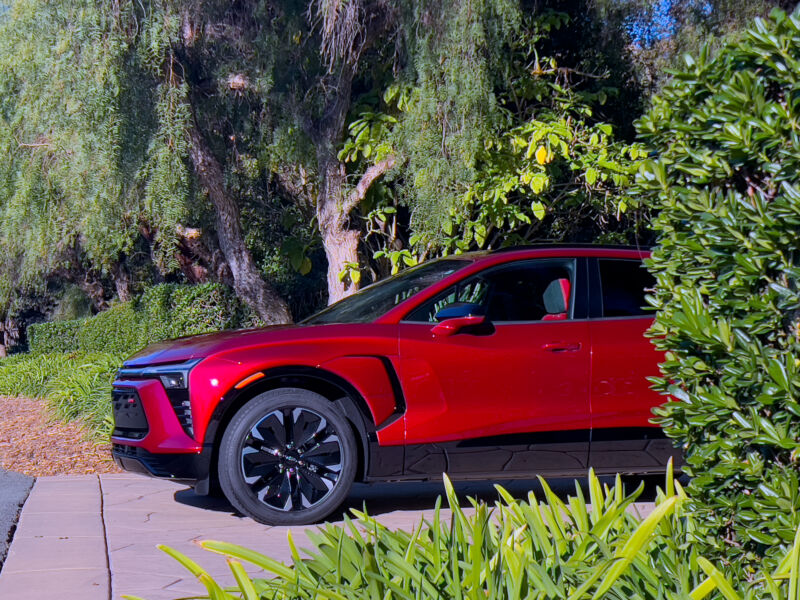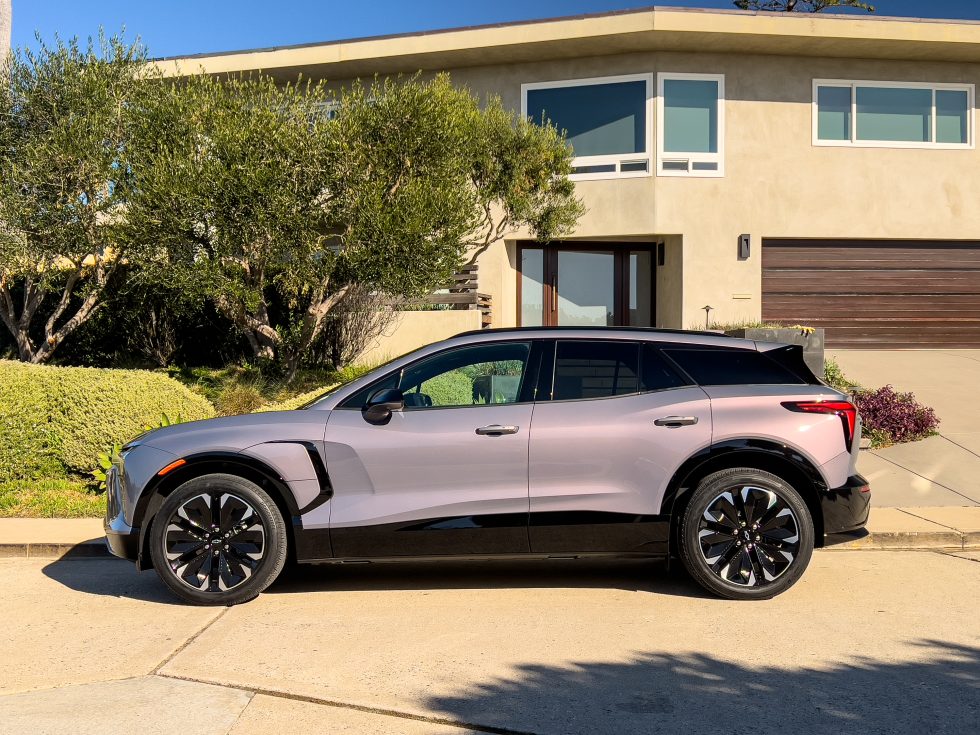
Jonathan Gitlin
DEL MAR, Calif.—Americans love midsize SUVs—American automotive product planners, at any rate. These SUVs have supplanted sedans and station wagons as the family-mobile of choice, offering all the advantages of a hatchback with a lofty driving position. Now there’s a new one in town, an all-electric version of the Chevrolet Blazer. It’s not an EV conversion of the existing Blazer but a new model built on the same dedicated platform as the Cadillac Lyriq. After a few hours driving the new Blazer EV around the outskirts of San Diego, here’s what we’ve learned.
In time, the Blazer EV will be available in three trims (LT, RS, and SS) and in front-, rear-, and all-wheel drive configurations. But for now, Chevy is starting with the Blazer EV RS, available with either a single motor driving the rear wheels and a larger-capacity battery or an all-wheel drive variant with a smaller-capacity battery pack.
Chevy arranged for us to drive the $57,200 Blazer EV RS RWD first, so let’s start there. It uses a 102 kWh battery pack to achieve an EPA range of 324 miles (521 km), sending that energy to a 340 hp (254 kW), 325 lb-ft (440 Nm) permanent magnet electric motor.

Jonathan Gitlin
This version can DC fast charge at up to 190 kW—Chevrolet declined to give a time to charge to 80 percent but did say it will add 78 miles (125 km) of range in 10 minutes when charging at that rate.
The other spec that’s on sale right now is the $56,200 Blazer EV RS eAWD. It’s less powerful, offering a combined 288 hp (214 kW) and 333 lb-ft (451 Nm) from a combination of an induction motor at the front axle and a permanent magnet motor at the rear.
The eAWD Blazer is cheaper than the single-motor variant by dint of a battery with almost 17 percent less storage capacity—85 kWh in this case, which is sufficient for an EPA range of 279 miles (450 km). Again, we don’t have a fast-charge time to 80 percent, but it should add 69 miles (111 km) in 10 minutes at a maximum rate of 150 kW.

